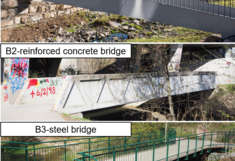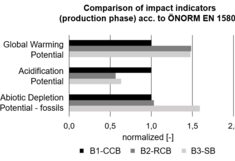Conducting an objective life cycle assessment for building components and buildings is essential for a deeper understanding of the environmental impact. Based on ÖNORM EN 15804, for example, the environmental impact of building materials and building products can be assessed, and based on ÖNORM EN 15978, buildings can be assessed.
Expectations of supposedly environmentally friendly or environmentally harmful behavior can thus be scientifically proven or often turn out to be wrong.
The working group for resource-efficient building construction and civil engineering is therefore concerned with the ecological evaluation of the technologies currently being researched, in addition to design optimization independent of the material. This is the only way to assess whether a reduction in environmental impact can be achieved with the new approaches.
Translated with DeepL.com (free version)
Contact:
Publications:
Kromoser Benjamin, Holzhaider Philipp. An innovative resource efficient timber-concrete-composite ceiling system: Feasibility and environmental performance. Civil Engineering Design. 2021. DOI: 10.1002/cend.202100022
** Stoiber, N; Hammerl, M; Kromoser, B Cradle-to-gate life cycle assessment of CFRP reinforcement for concrete structures: Calculation basis and exemplary application.
Preinstorfer, P; Reichenbach, S; Huber, T; Kromoser, B (2021): Potential Fields of Application for CFRP Reinforcement in Concrete Infrastructure Engineering: Material Availability, Application Areas and Static Parametric Study with Consideration of the GWP.
Reichenbach, S; Kromoser, B; Preinstorfer, P; Huber, T (2021): Application potential of textile reinforcement in concrete construction for infrastructure buildings: Environmental performance and availability.


